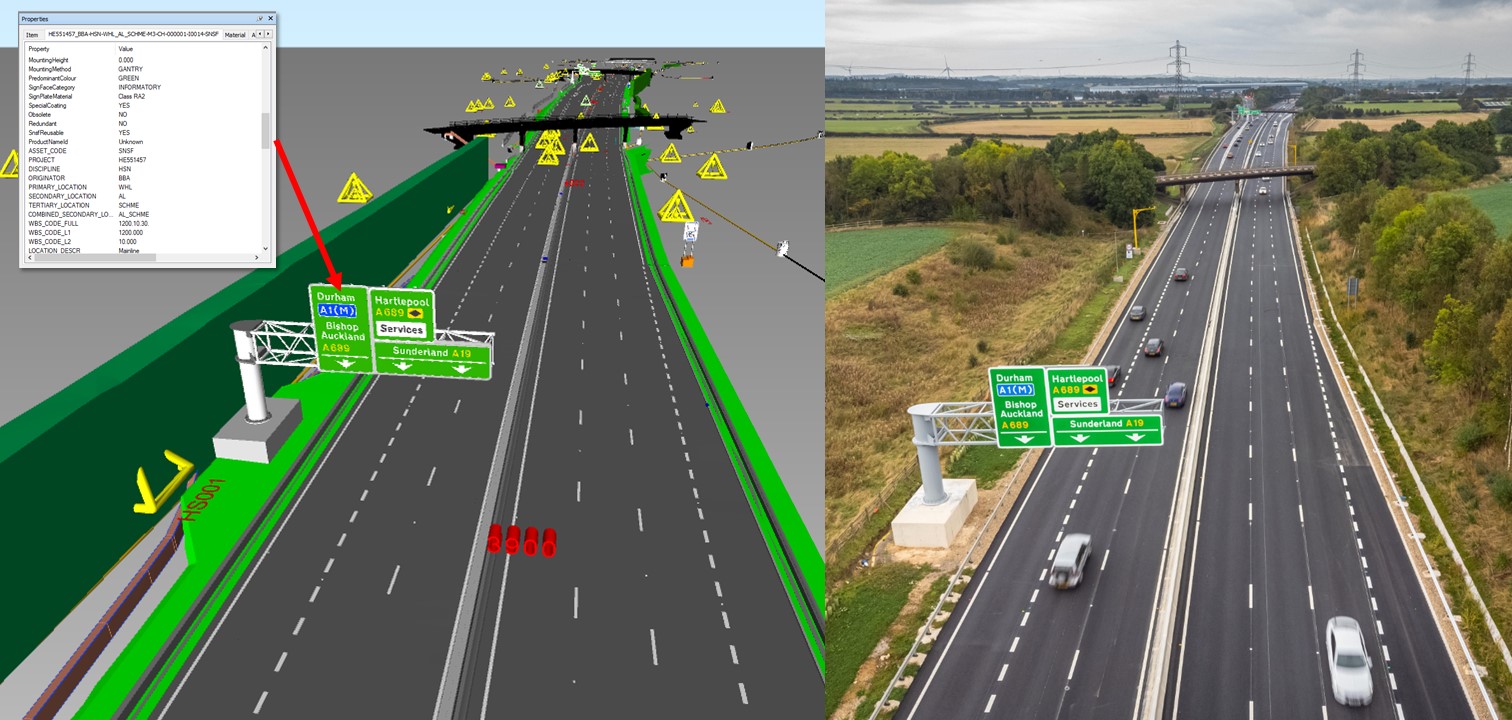

Digital innovation in the delivery of a major highways project proved a gamechanger from the outset of the A19 Norton to Wynyard scheme and has resulted in far reaching implications for all involved in the design, construction, operation and maintenance of the new ‘digital’ road network.
Join other savvy professionals just like you at CIHT. We are committed to fulfilling your professional development needs throughout your career
A commitment by AtkinsRéalis and construction partner Balfour Beatty to adopt a ‘digital first’ approach on the £60-70m Tees Valley improvement project not only required significant upskilling of staff, but a shift in mindset, culture and behaviours to succeed.
The award-winning project pushed new boundaries in the handover of major highways projects by handing over a full, data-rich model of the scheme as the primary maintenance record for the project. This innovative approach resulted in the handover of an accurate and robust maintenance model to client National Highways, allowing the maintainer immediate access to a geometrical & alphanumeric representation of every asset on the project at the touch of button.
The project involved upgrading A19 between Norton and Wynyard from two to three lanes in each direction to increase capacity for road users and improve the reliability for peoples’ journeys. The aims of the project included reducing congestion, delays and traffic noise, and ultimately supporting economic growth in the North-East of England.

Brian Russell, project information manager, said: “When AtkinsRéalis started working on the scheme, we were committed to using a digital approach from day one. We wanted to see day-to-day improvements in our processes, but we also wanted to hand over a ‘digital twin’ of the scheme to better support our construction partners, our client National Highways and its maintenance and operation teams, long after we had left site.”
Moving away from traditional technical drawings, the AtkinsRéalis team opted for a federated model using Navisworks which pulled in all design models used on the scheme and merged them into one collaborated portal.
Navisworks enabled users to view drainage, highways, barriers, and all other elements on the scheme in a consistent, clear, and user-friendly way. Every element of the 4,500 plus newly constructed or modified elements displays as a graphic on an easily accessible device such as an iPad, and in addition, the digital model contains all asset data to form the primary maintenance and asset management record for the scheme.
Brian added: “For the first time, every member of the team, from the designer, contractor, client and manager of the network has a clear overview of the scheme, and because it’s linked to the asset data, potential issues could be identified and resolved before construction even began.”

Traditionally, the thousands of ‘as-built’ drawings and files need to be updated before being printed and stored by the client. This is an extremely time-consuming and laborious process, notwithstanding the significant cost and carbon implications of transporting and storing them long-term. The benefits realised by the production of the maintenance model is estimated to have saved approximately 1700 hours of project work with an associated of fee of £67K.
But its data recovery that poses the most significant challenge for clients when trying to manage assets using physical 2D information.
The integration of the maintenance model with the National Highways Asset Data Management Manual data (ADMM Data) enables asset management data to be retrieved at the click of a button. This in turn can be overlayed with historical maintenance data and any known health and safety risks on the network, improving the operational safety of the SRN for road users and maintenance personnel alike.

By far the biggest challenge of a digital by default approach, is taking every member of the project team on that journey with you. The experience of the vast majority of the design and construction professionals on the project was in traditional methods and paper drawings.
Brian said: “It was a new experience for most involved, and the first time we had opted to rely solely on digital plans. A significant shift in working culture was required, and these ‘softer’ issues such as upskilling and behavioural change are often more challenging to overcome than upgrading the physical infrastructure.
“Digitisation of the network is here to stay, but the skills of our design and construction community are paramount to the accuracy and reliability of any digital model – the high quality of the data captured within the digital environment engenders trust and allows us to derive insight, analyse, react and even predict when intervention is required.”
Embracing digital was an opportunity to develop a complementary skillset, broadening the knowledge base and generating a ‘lightbulb moment’ for the project team. Understanding the far-reaching implications of the benefits of a definitive digital inventory of the scheme, generates buy-in from all parties and is therefore more likely to achieve the desired outcome.

The highly accurate models and asset reports contained within Navisworks left no room for misinterpretation or ambiguity. The result being a neat, definitive, and detailed package of data, all in one place. The vast array of asset data contained within the A19 maintenance model - from manufacturer’s details to the date of installation - surpassed even the most meticulous traditional handover process. The days of transferring filing cabinets filled with technical drawings to the client have been replaced with a dynamic approach fit for the highways of the future.
This textbook example of People, Process, and Technology (PPT) shows that when all three are equally balanced, project delivery is supercharged, with greater control, enhanced visibility and optimal productivity.

The delivery of the A19 Norton to Wynyard scheme by AtkinsRéalis and Balfour Beatty is testament to the successful adoption of a digital first approach. The new road opened to traffic around six months ahead of the planned construction schedule set out by National Highways at the start of works in March 2020.
Close and consistent collaboration throughout the design and construction process, bolstered by our digital first approach delivered greater efficiency, productivity and accuracy in all outcomes and ultimately resulted in significant benefits to the client as well as safe, reliable journeys for the end road user.
This article is based on a talk for Digital Construction Week in London on 06 June 2024.

Join other savvy professionals just like you at CIHT. We are committed to fulfilling your professional development needs throughout your career
{{item.AuthorName}} {{item.AuthorName}} says on {{item.DateFormattedString}}: